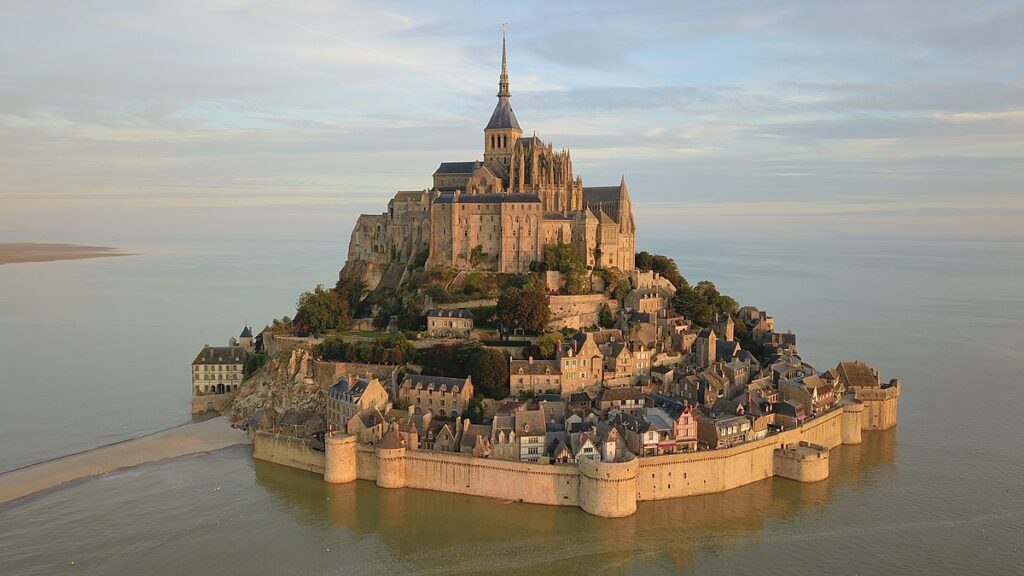Third and final appointment with the movements of salt waters, which occupy a large part of the planet that hosts us with so much patience.
In the first article we explored the “functioning” of the waves (https://www.earthgardeners.it/2023/07/27/i-ritmi-del-mare-le-onde/); in the second we were interested in currents (https://www.earthgardeners.it/2023/07/27/i-ritmi-del-mare-le-onde/); in this we will deal with the tides, the phenomenon that affects the whole Earth simultaneusly. Simultaneusly because while there are places where the tide is high, in others it is low and vice versa. Let’s try to understand why.
Tidal movements are the result of the action of the gravitational forces of the Moon and the Sun on the waters of the seas and oceans of our Planet.
Depending on the position that the Sun and Moon take with respect to the Earth, the tides can be more or less accentuated. If the two celestial bodies are aligned with the Earth, their forces add and the tide will be larger (syzygial or spring tides). If the two celestial bodies are arranged at right angles, the tide will be less broad because their forces will “pull” the masses of water in different directions: the tide will be neap. During the spring (March 21) and autumn (September 23) equinoxes, when day and night have the same length, the tides are very evident.

The tidal range is very varied; the Mediterranean coasts do not show large differences in height, the tides have an average of 40-50 cm, with a maximum peak of 150 cm in the Gulf of Trieste. Along the ocean coasts they can become very significant: in the Bay of Fundy, Canada, the difference can reach 19 m!
Depending on the steepness of the coast, low tide can leave more or less extensive territories uncovered.
Mont Saint Michel, a municipality in Normandy, stands on a tidal island, that is, an island joined to the mainland by a strip of sand that emerges and disappears depending on the tides: when the Atlantic Ocean retreats at low tide, it leaves its inhabitants the possibility of reaching the continent on foot.

The island of Mozia, located in the salt pan lagoon of the Stagnone di Marsala (TP), is an ancient Phoenician colony connected to the mainland by a submerged road, approximately 1,700 meters long and 7 meters wide, built around the middle of the 6th century BC, which was originally used by horse-drawn carts. Despite the rise in water levels that occurred from the time of its construction to today, during the low tide of Sizigia it is possible, with some caution, to reach the island on foot, following the ancient Punic road. It’s definitely exciting: you have the sensation of walking on water!

The coming and going of the tide determines a peculiar ecosystem called the intertidal zone or Mesolittoral plane.
The organisms that live in the intertidal zone present, to varying degrees, peculiar adaptations that allow them to avoid desiccation in the hours in which they remain emerged and have developed a great adaptability to the sudden changes in temperature and salinity that characterize this habitat. This ecosystem that connects land and saltwater is mainly inhabited by animal species: barnacles, chitons, small gastropods, isopods, limpets, and mussels; few plant species have adapted to it.

Their biological clocks are regulated not only by the alternation of day and night, but also by the alternation of high and low tide. These adaptations are typical of sessile organisms: sea anemones, for example, open their tentacles during high tide and retract them as soon as the tidal wave retreats. Experiments conducted on fiddler crabs and two different species of diatoms, which live on the sandy coasts of North America, have proven that the activity of these species, regulated on circalunadian rhythms (i.e. regulated on the lunar day) is genetic because it persists even in the laboratory and in individuals who have never had direct experience with the tides.

The presence of mollusks, worms and crustaceans is also inviting for many sea birds (gulls, waders, oystercatchers) which are easy to encounter, especially during low tide and after storms, as they rummage under the sand and debris in search of food.
In the bay of Aiguillon, on the Atlantic coast of France, the sandy coast has a very slight slope and the low tide leaves very large stretches of beach uncovered, which attract several thousand wintering birds. It is singular to note their arrangement: each species forms a sort of “strip” parallel to the coastline, depending on the length of the beak and legs. Looking from the beach we will see, in sequence, first the plovers, then the grey plovers, the sandpipers, the woodcocks, the curlews, and so on. Everyone intent on enjoying fresh molluscs and crustaceans of the day!
Credits
Author: Anna Lacci is a scientific popularizer and expert in environmental education and sustainability and in territory teaching. She is the author of documentaries and naturalistic books, notebooks and interdisciplinary teaching aids, and multimedia information materials.
Translation by Maria Antonietta Sessa



